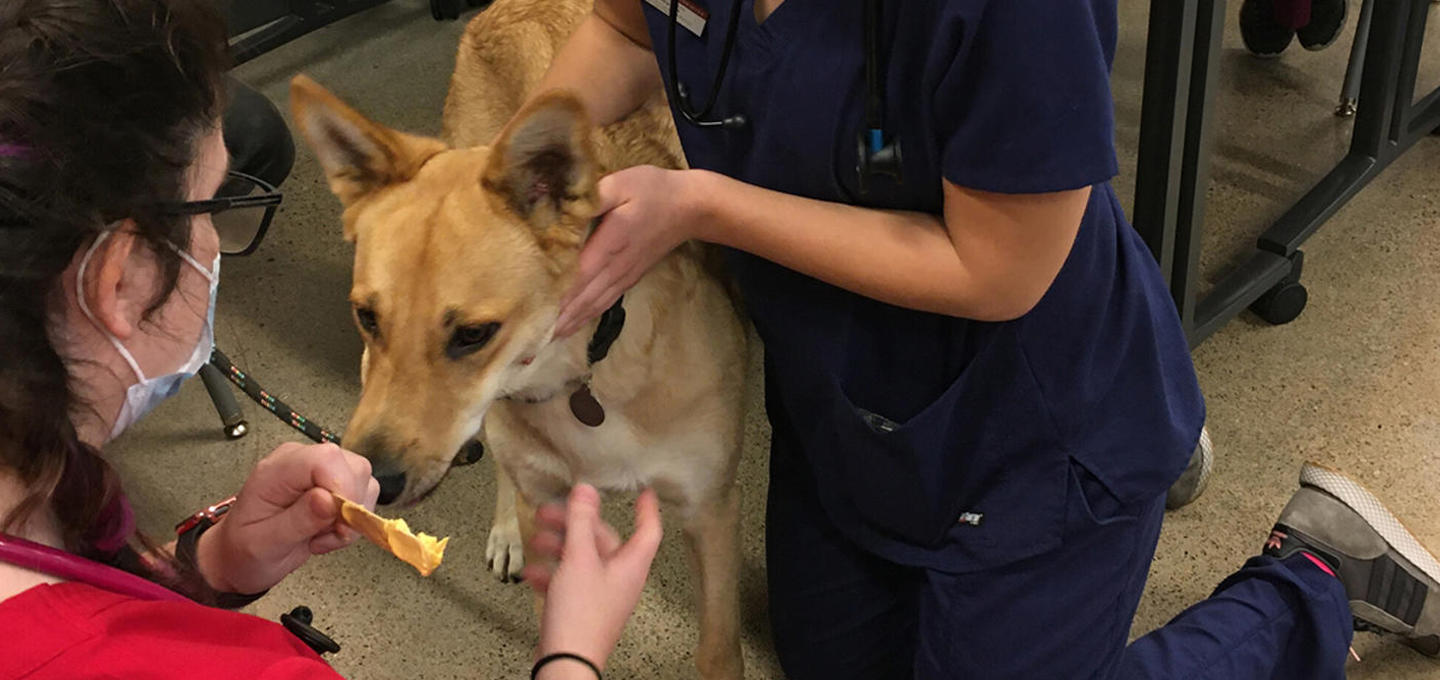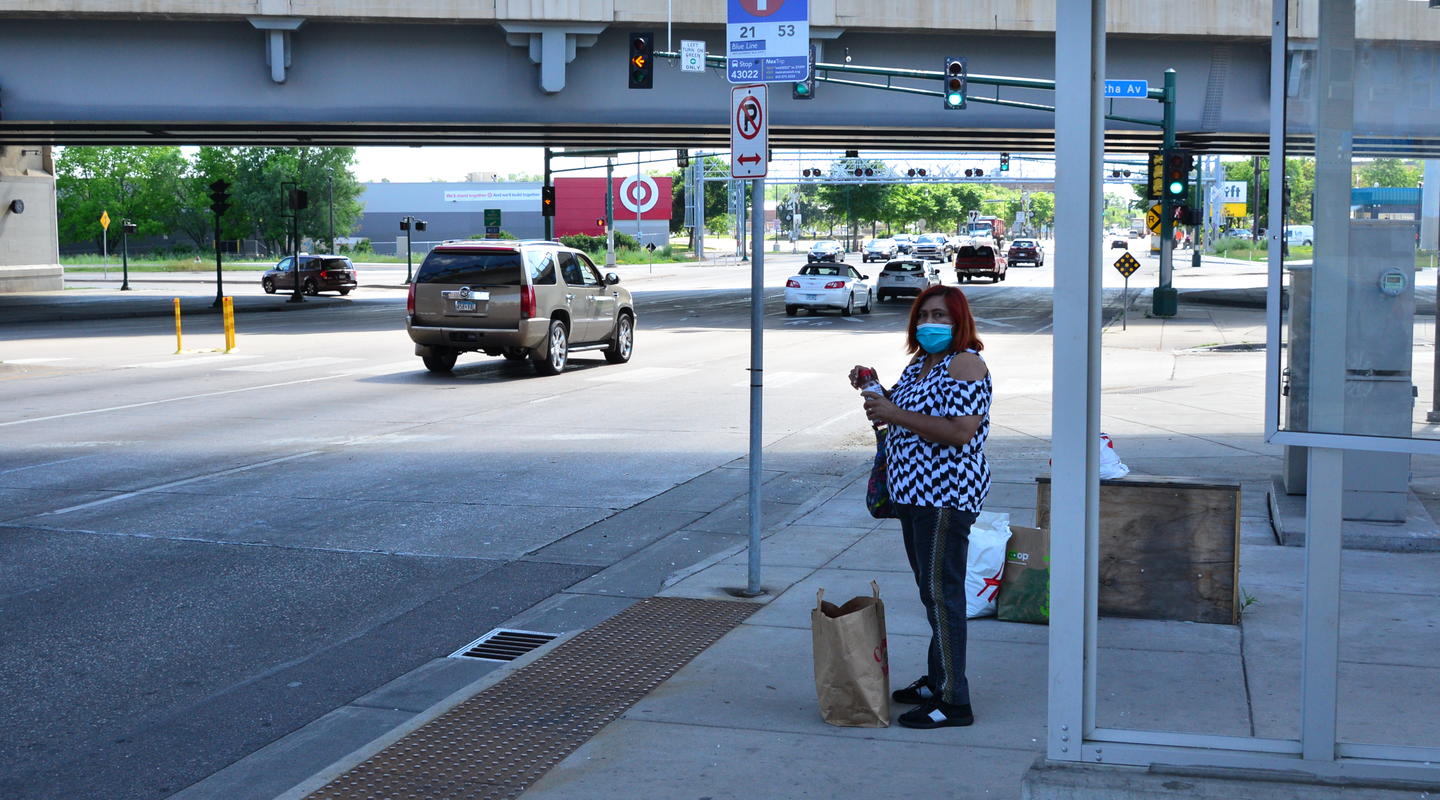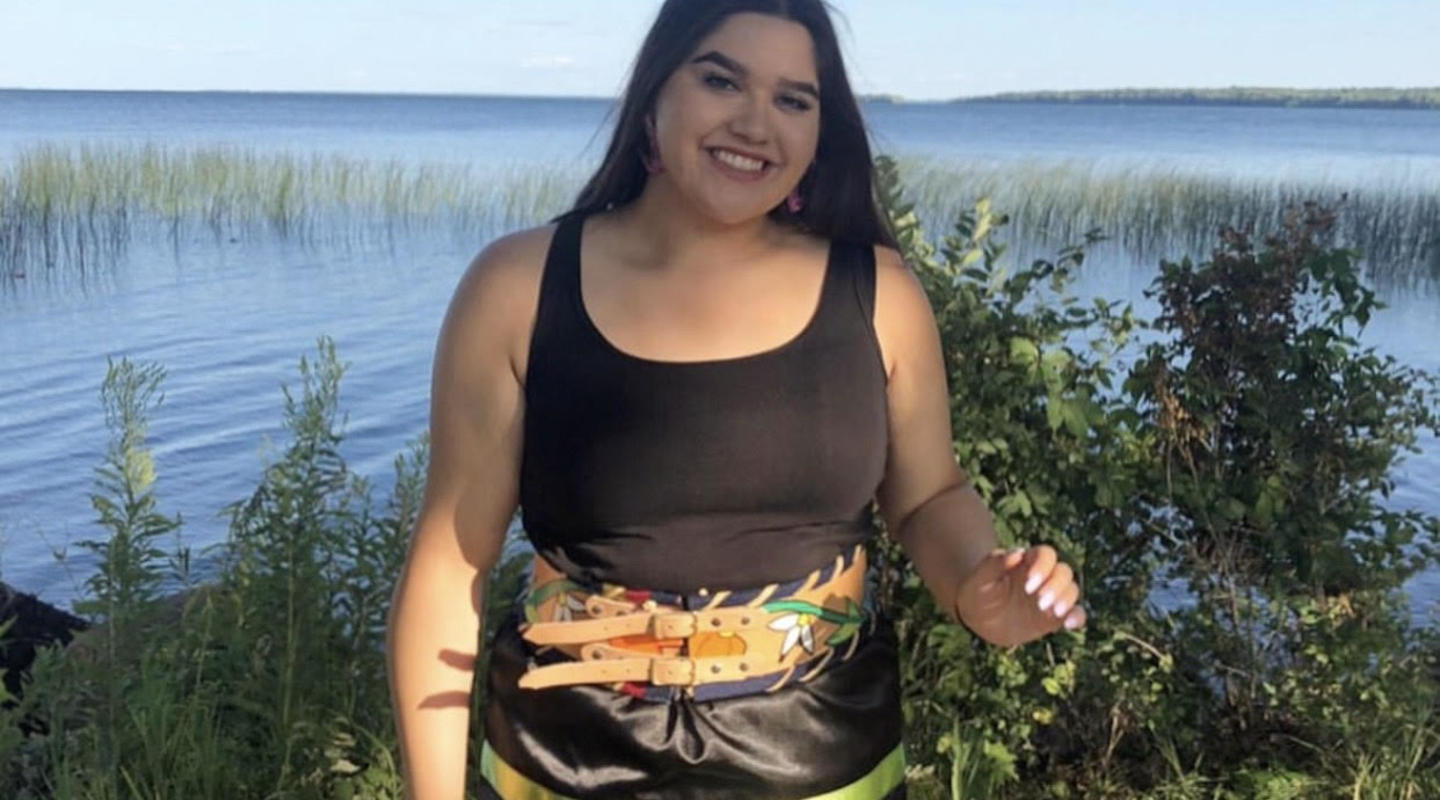
In a Sunday school classroom in the basement of Hennepin Avenue United Methodist Church in Minneapolis, Minnow, a 2-year-old golden retriever/shepherd mix, is being distracted by a University of Minnesota veterinary student holding a stick covered with spreadable cheese.
As Minnow licks the cheese, another student performs a nose-to-tail exam, while another records the findings. Minnow and his owner are here for the VeTouch (Veterinary Treatment Outreach for Urban Community Health) Clinic, a student-run clinic that provides free care for pet owners who otherwise couldn’t afford a vet visit.
Give to VeTouch
VeTouch is a student-run club in the College of Veterinary Medicine providing free care to pets in low-income homes and pets of the homeless throughout Minneapolis.
Minnow is just one of the animals in the clinic’s “dog room,” where groups of three students, along with volunteer veterinarians and vet techs, perform exams, administer vaccinations, test for heartworm and provide preventative medication, and treat minor problems, such as ear mites, itching, and joint pain.
Another exam room is devoted to cats, while a third is for people with more than one pet or especially anxious animals. The hallway connecting the rooms serves as a makeshift lab, pharmacy, and pet food pantry.
Clinics are held monthly on Sunday afternoons, with clients lining up at the outdoor intake tent even before church services have ended. VeTouch also holds clinics twice a year at the Little Earth community. “Before COVID, we could see about 50 to 60 pets in the church clinic,” says Robyn Ahrenhoerster, a third-year veterinary student and a co-president of VeTouch. “Now, in order to limit the number of people indoors, we can see about 20 to 30 per month.”
Shots, skin problems, and more
On a warm Sunday in October, people gather outside, walking dogs, holding cat carriers, calming nervous pets. They include a woman with a bulldog with skin issues, a woman with a nervous pit bull named Mocha, and Lisa, who is trying to distract Teddy, a barking Papillon/Australian Shepherd mix, who is clearly upset with what’s happening. Lisa brought Teddy in for an exam, vaccinations, and a heartworm test.
“I don’t know what I would do without them,” she says of the students and volunteers who run the clinic. In August, she brought her other dog, Baby, a Chihuahua with tooth problems. She says the students were able to help her get a grant to help pay for extractions at the Animal Humane Society. “They make it possible for me to have my animals,” she says.
Grace, who stpped by to pick up medication for Xahria, her 5-year-old black lab, says she, too, doesn’t know where she would be without VeTouch.
During a visit for immunizations last October, Ahrenhoerster noticed Xahria was limping on her right hind leg. The problem turned out to be a torn ligament. She worked with Grace to get low-cost X-rays and surgery at the Animal Humane Society.
During Xahria’s recovery, Ahrenhoerster stopped by Grace’s home to check on the dog and deliver medication. Now, is awaiting surgery on her left leg.
“They go the extra mile. In fact, they’ve gone an extra 500 miles for me,” Grace says, adding that she and Ahrenhoerster exchanged more than 120 emails during Xahria’s recovery.
Students see it all
“This is unique as far as a vet school experience goes,” says Paige Palomaki, a third-year student, who serves as co-president with Ahrenhoerster. “There are few other places where vet students can really feel like a doctor. The exams are all done by students, the records are written by students. It’s the most hands-on work we can possibly do.”
Palomaki, who received support from the Dana E. Mangi Memorial Endowment Fund and PetSmart Charities, got involved in VeTouch as an undergraduate. A prevet student who had studied medical Spanish, she assisted clients who needed translation. “I really appreciate the work we get to do,” she says. “It’s a great way to learn to communicate with vets and techs and clients. A lot of places where students work during vet school, they’re just assisting. They don’t see all the steps involved in one pet’s exam.”
Ahrenhoerster says being in a leadership role has been an opportunity to grow personally. “We don’t have the answer to everything, but we’re in charge of everything,” she says. “We’ve learned to be very flexible, especially with COVID, and we’ve learned how to do a lot with limited resources.”
Both acknowledge that the program couldn’t exist without grants and donations, which allow them to stock the pharmacy and purchase supplies. “Whether it’s a huge grant or a small donation, it’s how we get all our funds,” Palomaki says.
She says one of the biggest rewards is being able to eliminate barriers to care for people and their four-legged family members. “It helps the community and it’s such an amazing learning opportunity for students.”


